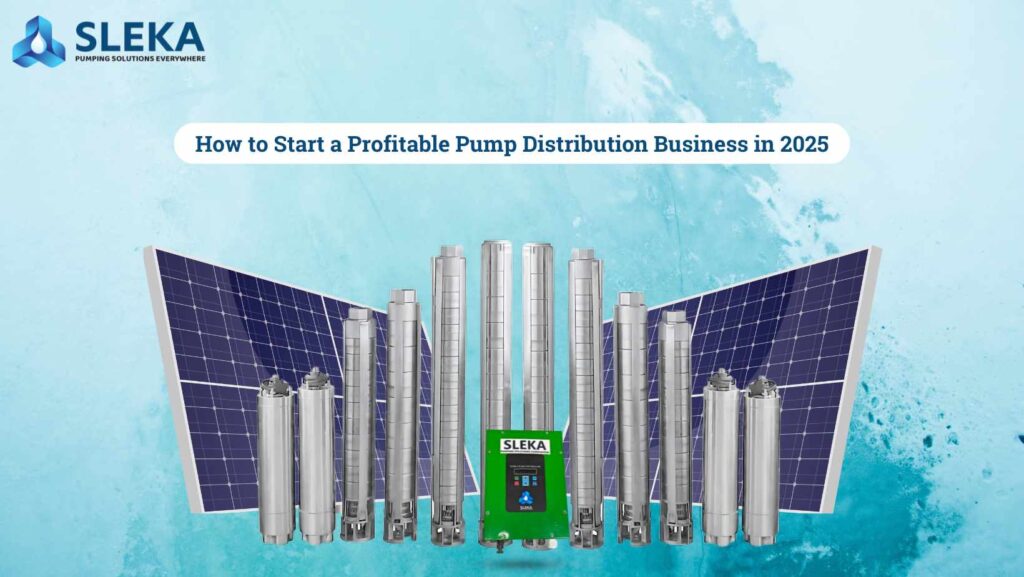How to Start a Profitable Pump Distribution Business in 2025
Introduction
Starting a pump distribution business can be a lucrative venture, especially in a time when water management and irrigation solutions are in high demand. If you’re looking to start a pump business, understanding the intricacies of a comprehensive pump dealership business plan is essential for maximizing your pump distribution profit. In 2025, the market dynamics are more favorable than ever, and SLEKA’s innovative solutions can give you the edge you need to succeed.
In this article, you will learn the essential steps to launch your profitable pump distribution business and strategies to create a competitive advantage. Whether you are a novice entrepreneur or an experienced businessperson, this guide will provide you with the insights and resources necessary to thrive in this industry. Let’s dive into how you can establish your pump dealership and ensure it is profitable!
Understanding the Pump Industry Landscape
Market Overview
The global pump market is projected to experience significant growth in 2025, driven by various factors such as urbanization, industrial growth, and increasing water scarcity.
- Key Drivers:
- Industrial growth leading to increased demand for water management solutions
- Technological advancements in pumping systems
- Growing environmental concerns and the push for sustainable solutions
Target Market Analysis
Identifying your target market is crucial to tailor your offerings effectively. Here are some primary segments to consider:
- Agricultural Sector: Large demand for irrigation pumps and systems.
- Construction Industry: Continuous need for dewatering pumps and site drainage.
- Municipal Needs: Water supply and sewage treatment facilities.
Understanding your target customers’ needs will allow you to develop a tailored pump dealership business plan that maximizes profits.
Creating Your Pump Dealership Business Plan
Essential Components of Your Business Plan
Your business plan should serve as a roadmap, outlining your objectives and strategies. Here’s a structured approach:
- Executive Summary: A high-level overview of your business goals and mission.
- Market Analysis: Detailed examination of market trends, customer needs, and competitive landscape.
- Operational Strategy:
- Source pumps from reliable manufacturers, such as SLEKA.
- Establish partnerships to enhance product offerings.
Financial Projections
- Startup Costs: Consider inventory, equipment, licensing, and marketing.
- Profit Margins: Assess potential profit margins in pump distribution to ensure business viability.
Funding Your Business
Explore various funding options including:
- Personal savings
- Bank loans
- Investor funding
- Grants tailored for sustainable business initiatives
Implementing a solid business plan will guide you in starting a pump business that can thrive financially.
Selecting the Right Products: Why SLEKA Stands Out
Key Product Features
SLEKA’s range of pumps offers unmatched reliability and efficiency. When establishing your distribution lineup, consider the following features:
- Durability: Pumps designed to withstand tough conditions.
- Energy Efficiency: Leading to lower operational costs for end-users.
Complementary Products
- Noryl impellers and diffusers: Enhancing pump performance.
Dive deeper into SLEKA’s innovative offerings to enhance your product catalog effectively.
Marketing Your Pump Distribution Business
Building a Brand Identity
Establishing a strong brand identity distinguishes you in the competitive market. Consider:
- Logo Design: Create a logo that embodies your brand’s values.
- Online Presence: Build a website to showcase your products, including SLEKA’s pumps.
Digital Marketing Strategies
- SEO: Optimize your website with target keywords like “start pump business” and “pump distribution profit.”
- Social Media Marketing: Use platforms like Instagram and LinkedIn to connect with potential customers.
Local Outreach
Engage with local farmers, construction companies, and municipal governments to establish partnerships. Conduct demonstrations showcasing SLEKA’s products to build trust and credibility.
Maximizing Pump Distribution Profit
Efficient Inventory Management
Implementing effective inventory management strategies ensures you meet customer demands without incurring excess costs. Consider using software solutions to track stock levels, demand forecasting, and order management.
Customer Relationship Management (CRM)
Utilizing a CRM system helps you nurture relationships with clients, leading to repeat business.
- Follow-Up Services: Offer maintenance services to enhance customer loyalty.
- Feedback Loops: Seek customer insights to improve offerings continually.
Upselling and Cross-Selling
Provide related products that complement the primary pumps, such as SLEKA’s submersible pumps or Noryl products, to increase average sales.
Conclusion
Starting a pump distribution business in 2025 encompasses various strategic steps—from crafting a solid business plan to effectively marketing your products. Leveraging partnerships with reputable brands like SLEKA can significantly boost your operational success and profit margins. As you develop your pump dealership, focus on understanding the market, selecting the right products, and building a strong brand presence to stand out in this growing industry.
Wrapping Up!
To know more about solar pumps in agriculture, visit – explore SLEKA’s range of submersible pumps.
To know more about Noryl impellers and diffusers, do visit – https://www.nobtech.in/products/.
Meta Description
Discover how to start a profitable pump distribution business in 2025 with SLEKA’s innovative solutions and expert tips for success.
Suggested FAQ Section
- What are the essential steps to start a pump distribution business?
- How can I create a profitable pump dealership business plan?
- What products should I focus on when starting a pump business?
- How do SLEKA’s pumps differ from competitors?
- What marketing techniques work best for a pump distribution business?


